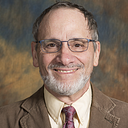Mendel Letters 29 — School Integration at PS 104
Dear Mendel,
In June 1959, the New York City Board of Education announced a school integration plan. Four hundred Black kids would be bused from overcrowded schools in Bedford-Stuyvesant Brooklyn to schools in Glendale and Ridgewood, Queens. White parents responded with a series of “Taxpayer” protests against school integration. In September, Harlem parents demanded that students could be transferred to desegregated schools in the Bronx. That didn’t happen until the following year.
In September 1960, six African American children appeared in my fifth grade class at PS 104 on Shakespeare Avenue. I remember three names, Patricia and Roger because they were tall and stood at the back of the line with me, and Gideon. Only Gideon was still there when we entered Junior High School 82 and he continued with my cohort when we entered the select Bronx High School of Science.
All I remember about the six students who joined my elementary school class was that it was nothing special. Nothing changed. They weren’t from the neighborhood so we didn’t see them outside of school where fights between kids from different blocks took place.
Middle school was different. Macombs Junior High School where Macombs Road intersects University Avenue was technically desegregated, but classes were never integrated. The kids who walked to school from Highbridge were almost all white and Jewish. But another group of students took the Tremont Avenue bus from Crotona Park and they were mostly Black. My friends and I were in the two-year SP program, which meant we skipped 8th grade. The only Black kid in the program was Gideon. The other Black students were in the regular three-year program and the two groups inhabited different universes within the same building and we never saw each other.
You had to take a test to get into Bronx Science, which basically meant only students in the accelerated SP program were prepared to pass the test and be admitted. Science was even more racially segregated than PS 104 had been before 1960. The Black students from Macombs went to the local high school, Taft. The white students who didn’t make Science and where scheduled for Taft, their families mostly moved away to the suburbs. We stayed in the Bronx because my brother also made Science. It wasn’t until I started City College in 1967 that I met any Black students again.
I don’t think any of these things were your decisions, although you did decide not to run when other families moved out of the Bronx. You never taught us to hate or fear other people, but we also never discussed possible support for racial integration. School and neighborhood segregation was just the way it was in New York City in the 1950s and 1960s. In many ways it still is today.
Your son
Hard copies of these typed letters were discovered in an old camp trunk in the basement storage facility of one of the few buildings that remain standing in this Brooklyn neighborhood. The building is quite decrepit and is scheduled for demolition. The letters were found in November 2048 by a teenager who believes they were written by his great-grandfather. The letters are addressed to Mendel, the letter writer’s father, who appears to have been dead for at least six years when his son, whose name we are unsure of, started to write him. The son appears very agitated in some of the letters. With permission from the family, we are publishing them on the date they were written, only 28 years later.
Follow Alan Singer on twitter at https://twitter.com/AlanJSinger1.
